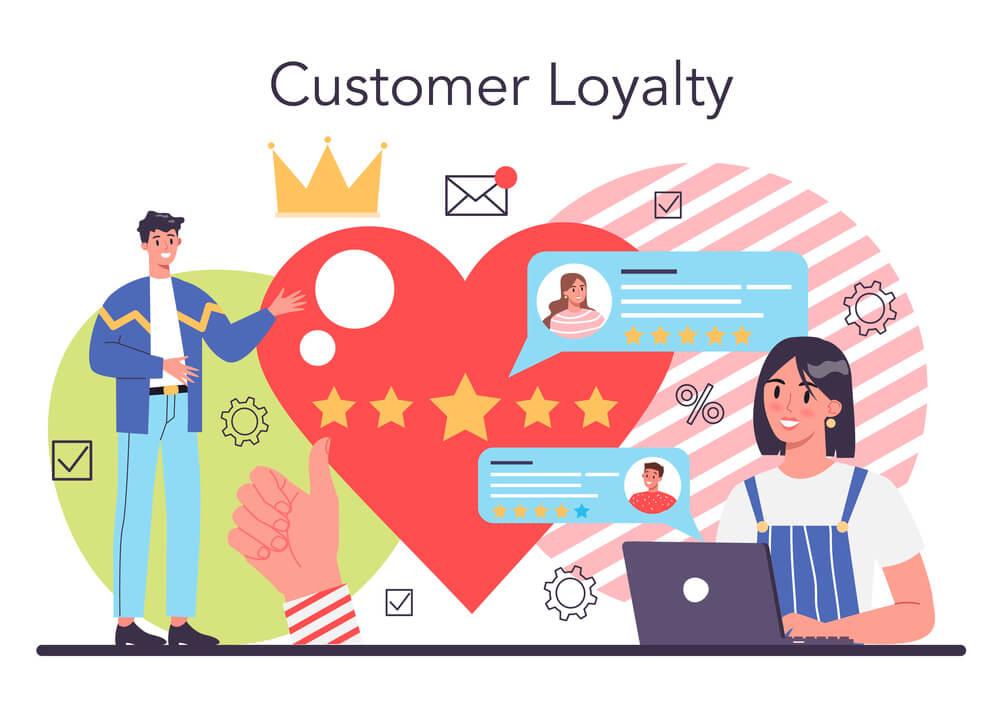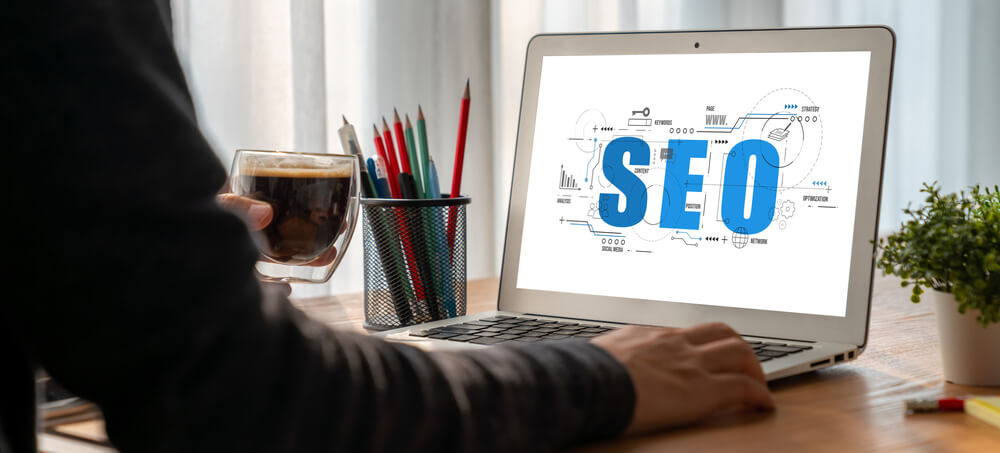
In the rapidly evolving online market, businesses are increasingly understanding the importance of user-friendly website design.
Web design plays an important role in shaping the user experience, influencing brand perception, and ultimately fostering customer loyalty. A well-crafted website not only serves as a virtual storefront but also becomes a powerful tool for establishing trust and connection with your audience.
The website is often a customer’s first interaction with a brand and significantly contributes to shaping their perception of it.
Subsequently, web design and the user experience have become important elements for businesses intent on fostering robust customer loyalty.
Want to create a website for your business? Let Texas Web Design help you. Give us a call at 210-985-8528.
The Intersection of Web Design and User Experience
User experience and web design are intertwined, and their symbiotic relationship significantly impacts brand perception. The user experience refers to the customers’ interactions with a product or service, while web design focuses on the aesthetics and layout of a site that make these interactions possible.
Successful web design caters to the needs of users by providing an intuitive, comfortable online space that enhances the user experience and encourages return visits.
It is driven by consideration of the user’s journey through the sales process, from product search, browsing, comparison, and the checkout process.
Fostering Brand Perception Through Web Design
Brand perception is the audience’s overall view and interpretation of your business. A business’s website design is an effective tool to control and enhance how customers view their brand. A well-structured page with suitable images and engaging content, for example, can instill trust in your target audience and paint a picture of a professional, reliable brand.
By perfectly synchronizing product descriptions, SEO optimization, and an excellent media presentation, a well-designed site attracts customers and garners their trust, which translates directly to online traffic and sales.
Engaging Content
Users often scan content before committing to a deep read. Ensuring readability and scannability through concise headings, bullet points, and well-organized content facilitates a quick grasp of information. Users should be able to glean essential details effortlessly, whether they’re exploring products or seeking information about your services.
Understanding your target audience and personalizing content accordingly contributes to a tailored and engaging experience.
Personalization can extend from suggested products based on past purchases to dynamic content that adapts to users’ preferences. The more users feel that your website understands and caters to their needs, the more likely they are to stay and explore further.
SEO Optimization
SEO-friendly design elements, such as the proper use of heading tags, meta descriptions, and alt text for images, contribute to better search engine rankings. Appearing higher in search results increases the visibility of your brand, driving more organic traffic to your site and potentially expanding your customer base
Engaging and informative content supported by an aesthetically pleasing design captivates visitors and encourages them to spend more time on your site. The longer users stay engaged, the more likely they are to explore your products or services, leading to increased chances of conversion and customer loyalty.
Related: BSEO Benefits of Responsive Web Design
The Visual Language of Branding
One of the foundational principles of using web design to foster brand perception is maintaining consistency in visual elements. From the logo and color palette to typography and imagery, consistency creates a cohesive visual language that users can associate with your brand.
When visitors encounter a unified and recognizable design across various pages of your website, it reinforces a sense of trust and reliability.
Beyond visual elements, web design should align seamlessly with your brand’s core values. If your brand is built on innovation, the design should reflect a modern, cutting-edge aesthetic.
Similarly, if trust and reliability are your brand pillars, a clean and professional design becomes imperative. The synergy between design and brand values contributes to a more authentic and meaningful user experience.
Ensuring Seamless User Experience
A seamless, smooth browsing experience is vital for retaining customers. Crucial web design parameters such as quick loading times, easy navigation, and clear call-to-action buttons significantly reduce user frustration and amplify the overall user experience.
Every part of the website, from the landing page and product pages to the checkout screen, should be designed with the customer’s convenience in mind.
Friendly payment options, easy product search, comprehensive product descriptions—these components of design-thinking build a strong rapport with the customers, boosting loyalty and increasing repeated sales.
Intuitive Navigation
The journey of a user through your website should feel more like a guided exploration than a maze. Clear and consistent navigation menus play a pivotal role in achieving this.
When users can easily locate essential sections, products, or information, they are more likely to stay engaged and satisfied with their experience. Consistency in navigation across pages fosters a sense of familiarity, contributing to a positive overall UX.
For users with specific intentions or those seeking efficiency, robust search functionality is a game-changer. Implementing an intuitive search bar that provides relevant results quickly enhances user satisfaction.
Autocomplete suggestions and filters further refine the search experience, allowing users to find what they need with minimal effort.
Mobile Responsiveness
Mobile-friendly designs not only cater to a broader audience but also positively impact search engine rankings. Google’s emphasis on mobile-first indexing makes responsive design not just a preference but a necessity for online success.
In addition to visual adaptation, optimizing the performance of your website for mobile networks is crucial. Fast-loading pages contribute to a positive user experience on mobile devices, where users expect quick access to information.
Compressing images, minimizing scripts, and prioritizing critical content enhance the speed and responsiveness of your site on mobile networks.
Efficient Forms and Transactions
Forms are everywhere on the web, from contact pages to subscription forms. Designing user-friendly forms with clear labels, appropriate input fields, and error messages contributes to a hassle-free experience. Autofill options, where applicable, reduce the effort required from users, streamlining their interactions with your site.
For e-commerce websites, the checkout process is a critical juncture that demands seamless design. Lengthy and convoluted checkout forms can lead to cart abandonment. A streamlined and user-friendly checkout process, with minimal steps and clear instructions, enhances user satisfaction and increases the likelihood of successful transactions.
Clearly indicating secure payment options, using SSL certificates, and displaying trust badges contribute to a sense of trustworthiness. Users should feel confident that their sensitive information is handled securely, fostering trust in your brand.
The Impact of Web Design Mistakes on Customer Loyalty

The absence of mobile optimization, cluttered layout, poor color choices, and complicated checkout process—these are some of the common mistakes businesses often make while designing their eCommerce site.
Such mistakes, notably, can diminish users’ trust in the brand and subsequently impact customer loyalty. Proper market research would be instrumental in ascertaining the brands’ audience and avoiding such blunders.
Weakening Brand Identity
Inconsistency in visual elements, from branding colors to typography, creates a dissonance that can confuse and disconnect users. A lack of a cohesive visual identity dilutes the brand’s personality and weakens the emotional connection that customers seek.
Customers rely on visual cues for brand recognition and association.
When faced with a dissonant visual experience, the brand’s image becomes blurred. Incoherence undermines the establishment of a strong brand identity, diminishing the likelihood of customers forming a lasting bond with the brand.
Security Concerns
Neglecting to communicate and assure customers about the security of their data during online transactions is a significant web design mistake. Failing to showcase secure payment options and trust badges can create apprehension and undermine the perceived trustworthiness of a brand. In an era where online security is paramount, customers are cautious about sharing personal and financial information.
A lack of visible security measures during the checkout process can lead to abandoned carts and a reluctance to engage in future transactions. The perceived risk becomes a barrier to building a loyal customer base.
Poorly Designed User Experience (UX)
Design flaws leading to a convoluted and frustrating user experience can erode the trust customers place in a brand. From confusing navigation to slow-loading pages, each hiccup becomes a point of friction, affecting the overall perception of a brand’s reliability and professionalism.
Customers, faced with a cumbersome online journey, are more likely to abandon a website prematurely. This not only results in lost potential sales but also leaves a lasting negative impression. Trust, once eroded, is challenging to rebuild, and customers may seek alternatives with smoother digital experiences.
Enhancing Web Design Based on Customer Feedback
To constantly enhance user experience on an online platform, customer feedback is invaluable. Real-time data regarding what works for your audience can help rethink and revamp web design strategies, make precise fixes, and improve design over time.
Collecting and incorporating your customers’ opinions would not only better the online experience but display the brand as customer-centric, which in turn would boost customer loyalty.
The Future of Web Design and Brand Loyalty
In the dynamic landscape of online business, web design is both an art and a science. It goes beyond creating visually appealing layouts; it is about crafting an immersive user experience that leaves a lasting impression.
From the first impression to the checkout process, every aspect of web design contributes to shaping user perception and, consequently, customer loyalty. Web design will continue to be a key driver of brand perception and customer loyalty.
.Effective web design is an investment in the long-term success of your business. As technology advances and user preferences evolve, staying attuned to the latest trends and continuously refining your web design ensures that your brand remains not just relevant but a leader in your industry.
Remember, in the world of online business, the first impression is not just the last impression—it’s the beginning of a customer journey that can lead to enduring loyalty.

